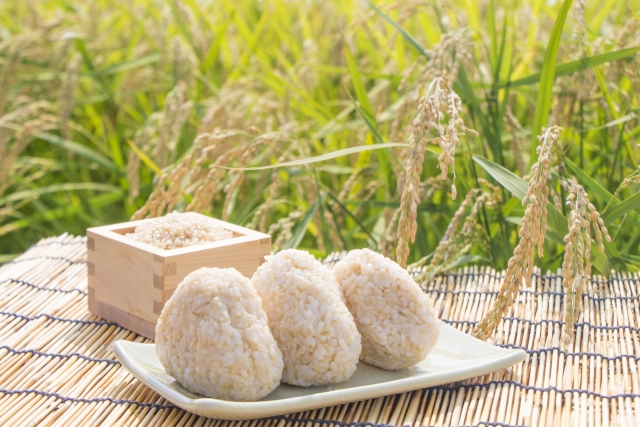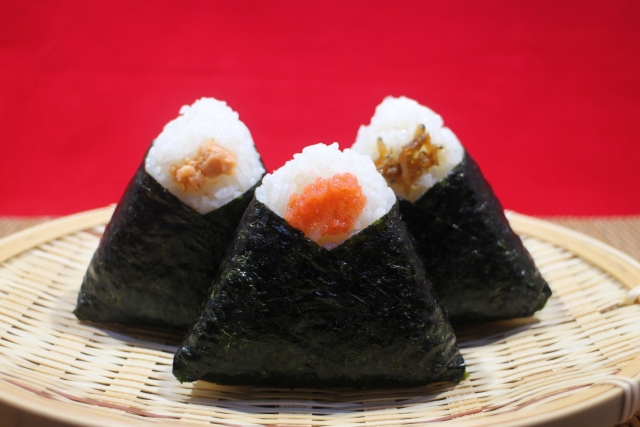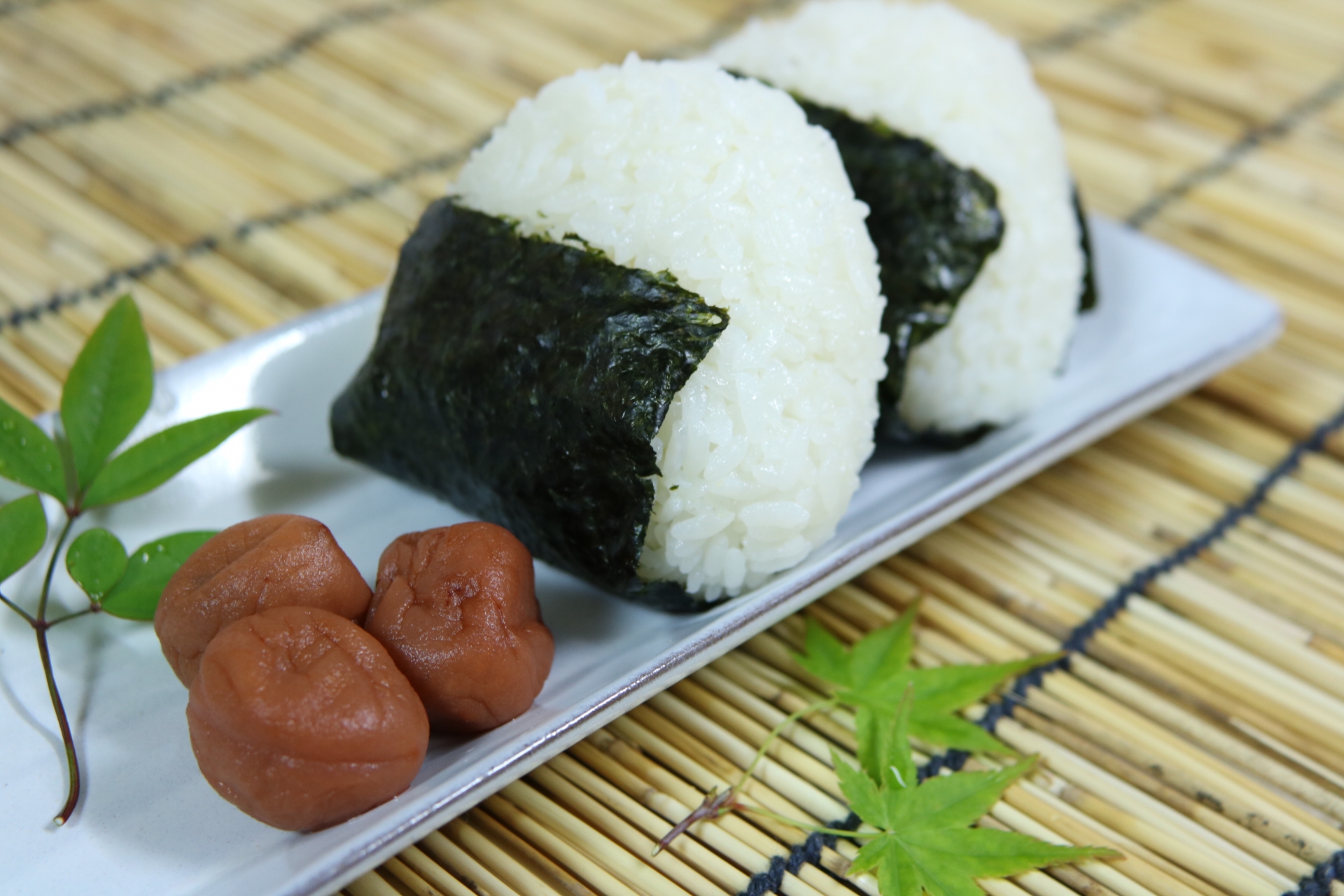Do you know Onigiri?
It is the Japanese typical food, commonly called rice balls.
Onigiri is indispensable to Japanese food culture, but unlike sushi and ramen, it is not well recognized in the world.
In this article, we will introduce the charm of rice balls that can be arranged with simple materials such as rice, salt, and seaweed.
Reference : https://www.onigiri.or.jp/about-us
The histories of onigiris

Rice was imported to Japan around 6,000 BC, and then from around 3,000 BC, rice cultivation spread from Kyushu to western Japan.
It is said that a fossil of onigiri was found in the middle to late Yayoi period ruins around the 1st century AD about 1800 years ago.
Since then, rice balls have been useful for serving servants at banquets at mansions, as well as for military supplies and nutritional support during farm work, and have always been close to the lives of Japanese people.
It was around the Edo period (1688-1704) that onigiris wrapped in seaweed, such as those currently on the market, were invented.
Since then, onigiris have been included in Japan’s first ekiben made in 1885 and in Japan’s first school lunch in 1889.
In 1978, Seven-Eleven commercialized hand-rolled onigiris with crispy seaweed, which became the main products of convenience stores.
The Japanese who loves onigiris
Onigiri is a food that everyone from infants to the elderly is familiar with, and they calls it “omusubi,” “nigirimeshi,” and “nigignigi.” The style of making by hand and eating by hand is the root of Japanese food.
Another charm of onigiri is that you can enjoy making them while thinking about the eater, and the fun of tasting them. Onigiri, which makes a relationship of mutual trust between the maker and the eater, can also be a communication tool for love and gratitude.
It’s an easy and convenient balanced nutritional diet

Since rice is a grain food, it is digested and absorbed more slowly than powdered food such as bread, and energy is continuously absorbed, making it difficult to get hungry.
Moreover, when the rice is cooled, the amount of “resistant starch” that has the effect of making the stomach full and adjusting the condition of the stomach increases, so onigiri is a good food for dieting.
In addition, you can easily adjust the nutritional balance of rice balls by devising the ingredients to put them inside.
It is a food that is full of benefits because it can be made quickly, is compact, easy to carry, is easy to store, has a rich repertoire, and is easy to balance nutrition.
Reference : https://www.gohansaisai.com/know/special/special-05-01/
How to make the delicious onigiri
Although it is easy to make from rice, salt, ingredients, and seaweed, onigiris are deep because of their simplicity.
For example, in the case of rice, there are many points to be particular about in order to make the best rice balls, such as brand, production area, washing method, flooding time, cooking method, quality / quantity / temperature of water used, and steaming method.
We will guide you the points to make delicious onigiris.
According to RICE BALL Co., Ltd., which operates a onigiri specialty store, the following seven points are important.
- Rice for onigiris should be a brand that is delicious and sweet even when cooled.
- Cook the rice hard. Inundation time is at least 60 minutes in summer and 90 minutes or more in winter
- Prioritize ease of grip when adjusting the amount of rice. It is recommended that you put it together lightly and do not overflow from one hand.
- Insert the ingredients all the way in.
- Don’t hold it tight and shape it gently.
- Place the rice ball in the middle of the large nori seaweed to shape it.
- Finally, put the ingredients on the head of the rice ball and it’s done.

Refer to the above 7 points and make your favorite onigiri.
Reference : https://macaro-ni.jp/75825
The recommended shops of onigiris
We introduce the recommended onigiri shops in Tokyo.
Asakusa Yadoroku in Asakusa
It is the oldest onigiri shop in Tokyo. They use a single ingredient rice that is carefully selected every year.
Asakusa Yadoroku
Address : 3-9-10 Asakusa, Taito-ku, Tokyo
Tel : 03-3874-1615
Business hours : 11: 30〜 / 18: 00〜 (Ends as soon as there is no more rice)
Regular holidays : Daytime: Sunday, Nighttime: Tuesday and Wednesday
Web site : http://onigiriyadoroku.com/english.html
Onigiri Bongo in Otsuka
55 kinds of menus! Founded in 1960, it is onigiris in downtown. They use the rice brand “Koshihikari” made from Nigata.
Onigiri Bongo
Address : 2-26-3 Kitaotsuka, Toshima-ku, Tokyo Kaneda Building 1F
Tel : 03-3910-5617
Business hours : 11:30 – 24:00
Regular holidays : Sundays (open on public holidays)
Web site : https://www.onigiribongo.info/
Onigily Cafe in Nakameguro
You can eat unique rice balls in a fashionable space like a cake shop. They use Koshihikari from Saku City, Nagano Prefecture, which is characterized by its stickiness and sweetness.
Onigily Cafe
Address : 3-1-4 Nakameguro, Meguro-ku, Tokyo
Tel : 03-5708-5342
Business hours : 8:00 – 16:00
Regular holidays : Irregular
Web site : http://onigily.com/onigily-cafe/
Kanai Beikoku Shop in Kichijoji
It is a onigirishop that sticks to additive-free ingredients.
Two types of rice are used, 7-minute rice and millet rice, and the variety changes depending on the month.
Kanai Beikoku Shop
Address : 2-26-9 Kichijoji Honcho, Musashino City, Tokyo
Tel : 0422-22-5439
Business hours : 9:00 – 18:00
Regular holidays : Sunday
Web site : http://www.kanai-come.com/
Conclusion
We think that the Onigiri’s world is wide and deep, and we want to you to experience it.
Try making original onigiris that are packed with your favorite foods at home.
And when you travel to Japan, try the onigiris that are carefully selected by famous shops.


